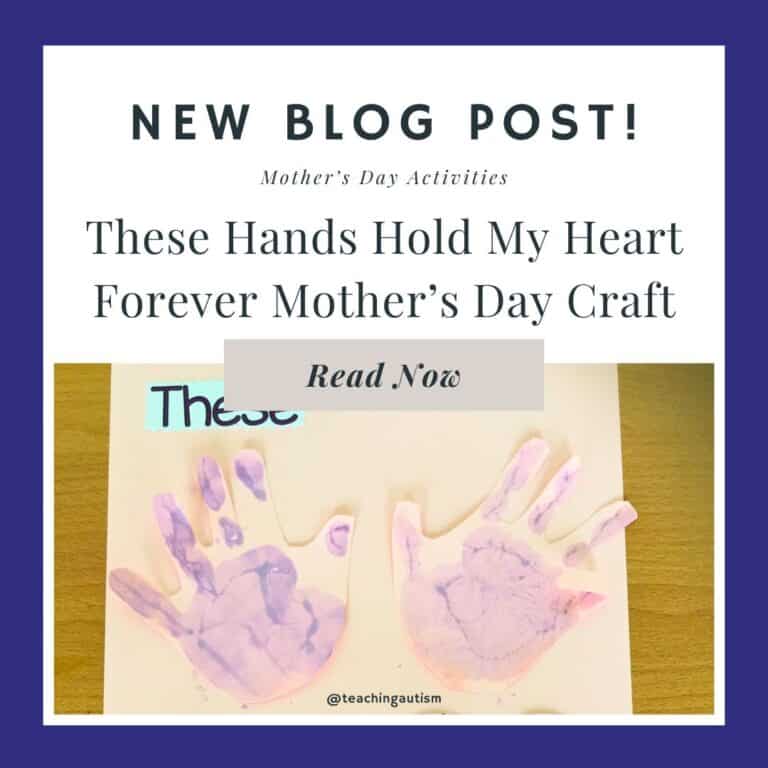What is Art Therapy?
We love trying out different therapies in our classroom to see which ones benefit our students the most. And one of the most successful ones is art therapy.
What is Art Therapy?
Art therapy encourages the individual to express themselves through painting, drawing, or modelling.
What Are the Benefits?
There are so many benefits from using art therapy. Some of these are;
- Reducing stress and anxiety.
- Improving problem-solving skills.
- Encourages and improves self-management.
- Process feelings.
- Develops fine and gross motor skills.
- Increase self-esteem.
- Recognize and control emotions.
- Develop coping mechanisms.
- Working collaboratively with others.
When Can You Start Art Therapy?
Experts recommend that students can start art therapy from 2-3 years of age.
How to Run Art Therapy Sessions in the Classroom
We like to keep our art therapy sessions with a bit of structure. But, we also like them to be student-led and allow our students to express themselves and be creative.
We run our art therapy sessions as part of our Therapy Thursday which you can read more about here. The sessions work best for us in the afternoon after lunch.
Our sessions run every week and we tend to follow a theme with them. When we first introduced art therapy sessions, we worked on a color of the week. And I actually give you lesson plans to use to run art therapy sessions as part of our monthly membership which you can find out about here.
Session Example
For this example, we are working on the color green. The session starts with the children sat around the IWB for the introduction of the powerpoint. The powerpoint consists of:
- Hello / Greeting Song.
- Color song – I.E. Green song.. Like this one on Youtube.
- Students are handed out their green frog hands they recently made ( you don’t have to do this – but we did and the children loved it!)
- A slide with images of lots of different green objects; apple, pear, car etc. At this point, a member of staff also works around the group with a green cloth bag filled with green objects – the children pull out a green object and staff/child names what they have pulled out.
- A quick game on the powerpoint where students have to answer the question ‘Where is the green (insert object here)’ and below it are two different colour pictures of that object – students have to find the green one.
- A slide with images and symbols of what activities are on offer that session.
- A slide with a calming green background with calming music to be played in the background which continues to be played throughout the session (we used this music)
Once the slide with the calming music is being played, students are directed to the different activities set up around the classroom – this is their choice of what activity they would like to do first.
Activities
The activities we have around the room are:
- Play dough table
Green play dough with green equipment to use with it – cutters etc. - Water table
We have a water table so we empty this out, fill with new water, add lots of green glitter to it and lots of different green toys and clear jugs for the children to play with. - Free paint
We cover one table with a blank piece of paper. Then, we put out lots of different shades of green paint as well as lots of different types of paint brushes, tooth brushes, sponges etc for the children to use to paint whatever they would like – we even have some painting their hands to make handprints and even their faces! - Soft Play Fun
We transform our soft play room into a sea of green. There was lots of green material, green lights and different green toys for the children to relax with and explore. - Guided Art
We have a table set up with a member of staff working on 1:1 basis. We have this activity as a guided activity. This is where we have an end goal for what we want the student to create.
How Long Should It Last?
The session can be as short or long as you like, with the calming music playing in the background be sure to take a calming approaching to the art therapy session and allow children to have lots of free art time, exploring different activities.
Do you do art therapy with your students? Or do you have any questions about it? If so, let me know in the comments below.
If you found this blog post helpful, please consider sharing it with your friends and colleagues on social media. And if you’re looking for lesson plans to help set this up, check out our monthly membership where I give you all the lesson plans to use!







